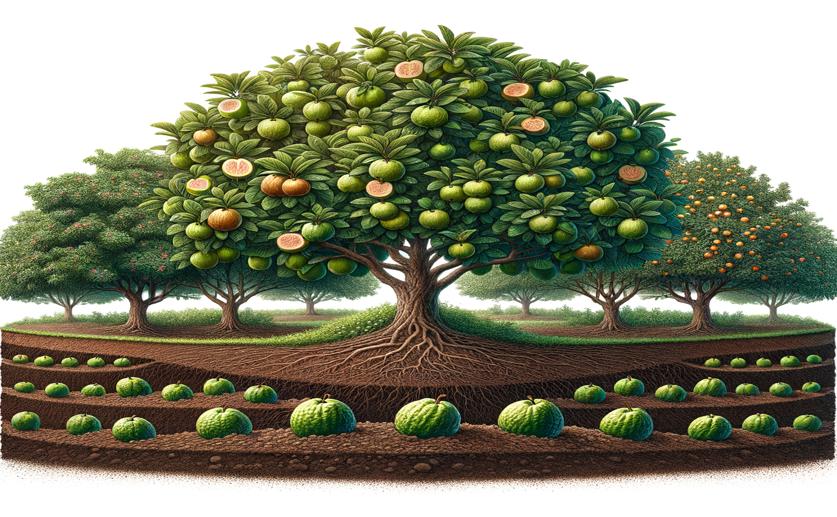
Boosting Soil Health and Guava Yield with Natural Mulch in Rain-Fed Orchards
Jim Crocker
18th June, 2024

Image Source: Natural Science News, 2024
Key Findings
- The study was conducted in guava orchards using Tephrosia candida biomass as mulch
- Applying 3.0 kg of Tephrosia biomass per square meter significantly increased trunk diameter, fruit yield, and fruit weight
- This mulch treatment also improved soil properties, including higher nutrient levels and better soil organic carbon and microbial activity
References
Main Study
1) Enhancing soil health and fruit yield through Tephrosia biomass mulching in rainfed guava (Psidium guajava L.) orchards.
Published 17th June, 2024
https://doi.org/10.1038/s41598-024-64814-x
Related Studies
2) Changes in the soil environment from excessive application of fertilizers and manures to two contrasting intensive cropping systems on the North China Plain.
Journal: Environmental pollution (Barking, Essex : 1987), Issue: Vol 145, Issue 2, Jan 2007
3) Influence of soil temperature and moisture on biochemical biomarkers in earthworm and microbial activity after exposure to propiconazole and chlorantraniliprole.



 14th June, 2024 | Jenn Hoskins
14th June, 2024 | Jenn Hoskins